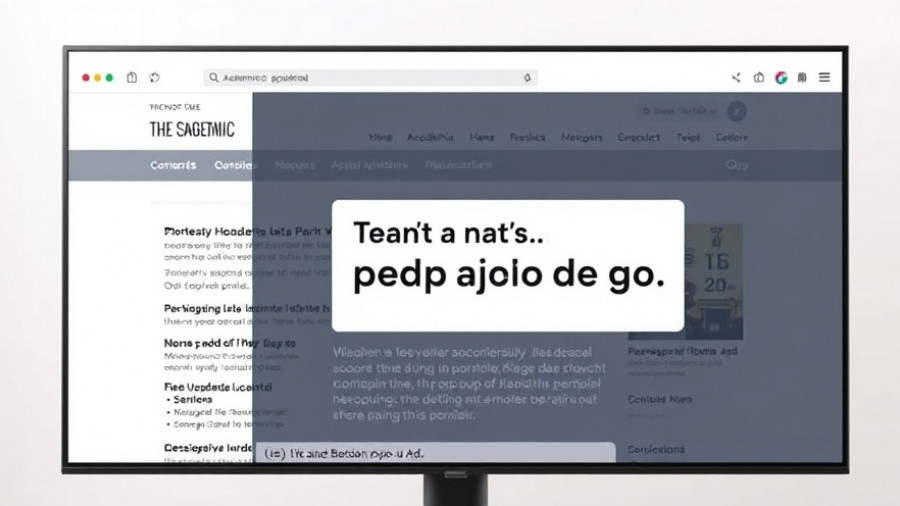
Microsoft's Bold Leap into In-House AI Technologies
Microsoft, a technology giant renowned for its software solutions, is embarking on a strategic shift to develop in-house AI models, signaling a significant transformation in the competitive landscape of cloud computing. This move aims not only to enhance Microsoft Azure's market dominance but also to boost the company's profit margins by minimizing reliance on external partners, notably OpenAI. By creating proprietary models like MAI-Voice-1 and MAI-1-preview, Microsoft is seeking a more robust control over its technology ecosystem.
The Power of Proprietary Models: A Game Changer for Microsoft
The introduction of proprietary AI models is set to redefine Microsoft's operational efficiency. For instance, MAI-Voice-1 can generate high-quality audio in less than a second, demonstrating the impressive capabilities of Microsoft’s new developments. This is achieved with the utilization of advanced hardware, including 15,000 NVIDIA H100 GPUs, optimizing performance while reducing costs associated with licensing third-party technologies. By integrating these models into key services such as Copilot Daily and Azure, Microsoft is positioning itself for scalable growth and improved customer solutions.
Financial Implications: A Commitment to Long-Term Growth
Microsoft's commitment to AI is evident in its substantial $80 billion commitment in FY2025 to build AI-enabled data centers. This capital expenditure is projected to save the company approximately $500 million annually through reduced operational costs. As revenue from Azure's AI capabilities continues to grow steadily—up 39% in Q2 2025—the company anticipates achieving a staggering 65% gross margin by 2026. This presents an attractive prospective for investors, reinforcing Microsoft’s stance as a formidable competitor in the AI landscape.
Strategic Competitive Advantage Over Rivals
While Microsoft's advancements are notable, it faces stiff competition from other major players like Amazon Web Services (AWS) and Google Cloud. AWS maintains a 30% market share, focusing on infrastructure, while Google is making strides with its Gemini models. However, Microsoft's integration of robust AI solutions, such as the 100 million users engaging with Copilot, may give it the edge needed to outrun its competitors. By strategically capitalizing on its unique AI ecosystem, Microsoft stands to gain substantial market share and customer loyalty.
Looking Ahead: The Future of Microsoft's AI Strategy
With a $30 billion plan for FY2026 aimed at sustaining Azure's revenue growth beyond $50 billion annually by 2027, Microsoft is poised for long-term success in the AI sector. This ambitious infrastructure expansion, coupled with the continuing integration of artificial intelligence across its product offerings, may solidify Microsoft's leadership in the market. However, the company must remain vigilant of potential short-term margin pressures within its Intelligent Cloud segment as it transitions its business model.
Decisions and Actions Moving Forward
For stakeholders in the tech industry, Microsoft’s strategic pivot to in-house AI models showcases a practical implementation of advanced technologies. As businesses consider their own AI strategies, recognizing the impact of proprietary solutions and the reduction of third-party dependencies could provide a considerable competitive advantage. The shift also serves as an insightful case study on how large corporations can effectively utilize resources to innovate and lead in rapidly evolving markets.
In conclusion, Microsoft’s strategic move highlights the company's commitment to reshape the cloud computing landscape through artificial intelligence. The success of these initiatives will not only enhance Microsoft's market position but also redefine how enterprises and consumers interact with technology in the future.
 Add Row
Add Row  Add
Add 




Write A Comment